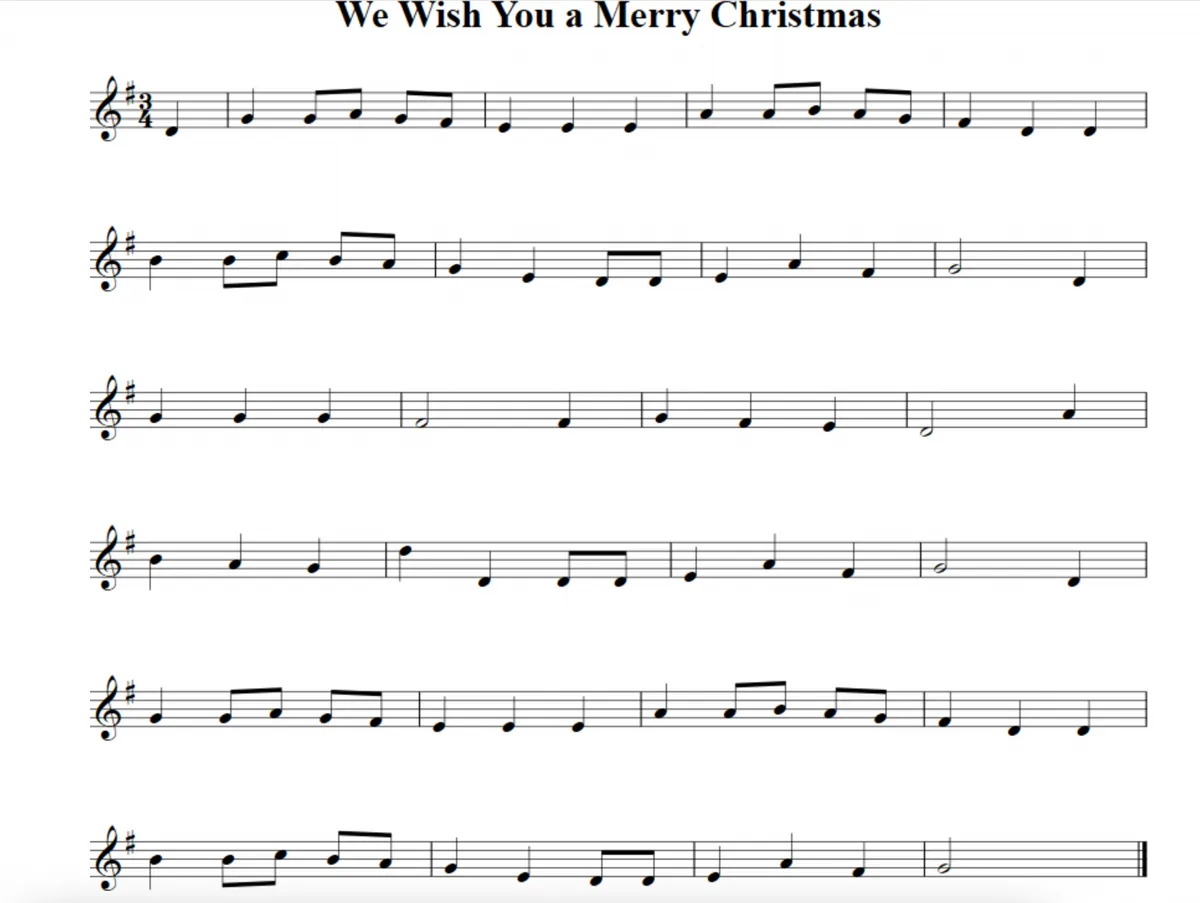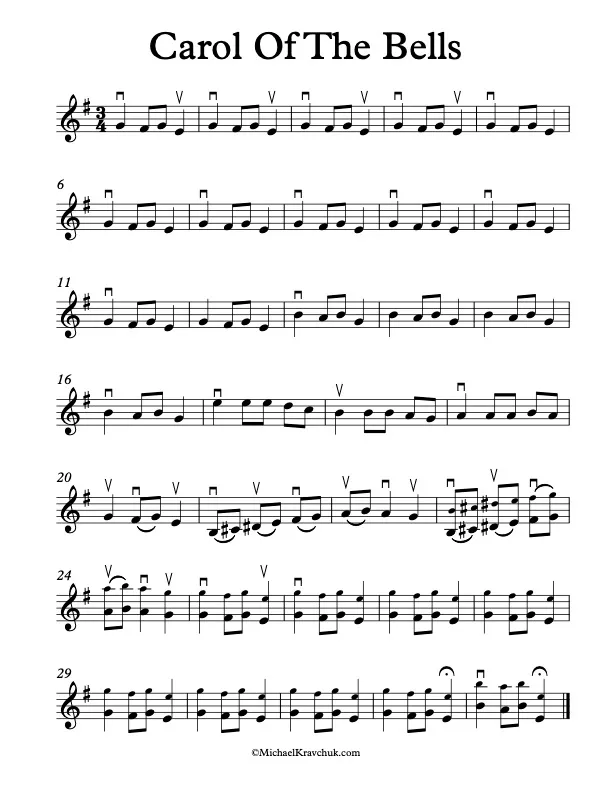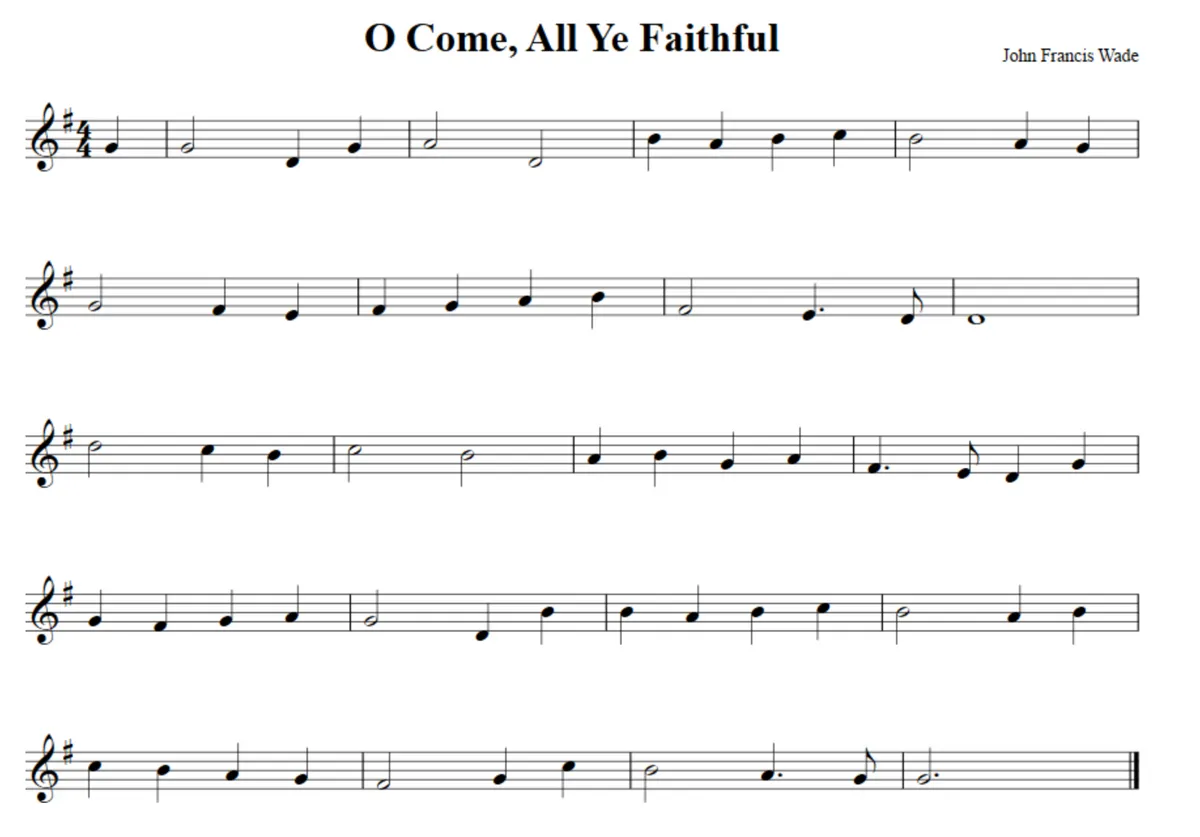One of the great joys of Christmas is its wealth of memorable music, from traditional carols and hymns, to popular tunes like Jingle Bells and Sleigh Ride.
It’s also a great time for violin students and enthusiasts, as Christmas tunes in their simplest arrangements can often make fabulous learning tools for beginners – instantly recognisable and fun to play, without the need for an advanced technique.
Here's a list of some of the easiest and enjoyable Christmas music for beginner violinists:
Good King Wenceslas
Hymnwriter John Mason Neale wrote the words for the carol Good King Wenceslas in 1853, while Thomas Helmore set the lyrics to the 13th century Eater carol Tempus adest floridum. Wenceslas was a 10th century Duke of Bohemia who was known for his great piety and devotion to helping the poor and needy.
This is a nice tune to start with, particularly if played in the key of G, meaning just one sharp (F sharp). Written in common time, there are no potentially difficult quavers (♪) or semi-quavers (♬) – and no dotted rhythms. The whole thing can also be played in separate bows with no slurs.
Jingle Bells
Jingle Bells was written by James Lord Pierpont Massachusetts in 1857 and was originally called 'The One Horse Open Sleigh'. Although not written as a Christmas song it started to become associated with the festivities in the 1860s.
Again, it’s easiest to play this in the key of G with just one sharp. The verses are sightly more complicated than Good King Wenceslas, with the occasional couple of quavers (♪), and the chorus includes a dotted rhythm on ‘jingle all the way’ – but if necessary these rhythms can be simplified to crotchets (♩), and it all lies nicely under the hand in first position, with no awkward stretches.
As well as being one of the best Christmas songs for children we named Jingle Bells one of the best Christmas songs ever
We Wish You a Merry Christmas
This very popular song originated in England's West Country and is thought to date back to the 16th or 17th centuries.
There are a fair few quavers (♪) here, but it’s in a nice simple key of G major and sticks just to the A and D strings, so is never too taxing in terms of bowing. Plus, We Wish You a Merry Christmas is a fun little tune to play – upbeat an energetic, with its rising two-bar sequences at the beginning, followed by the more considered middle section, and a final octave flourish on ‘Christ-mas’. A guaranteed winner.
We also named it one of the best pieces of Christmas piano music

Carol of the Bells
Inspired by Ukrainian chants, Carol of the Bells was composed by Mykola Leontovych in 1916. Its four-note ostinato in 3/4 time celebrates the New Year and the hope of better times ahead. The original Ukrainian lyrics recount how a swallow promises a household wealth for the following spring.
Although there are several tricky sharps in the ascending scales near the end, the ostinato figure throughout most of the carol means there’s a lot of repetition – so once you’ve mastered the first couple of bars, you’re well on your way to being able to play the whole thing!

Joy to the World
This familiar tune, known as 'Antioch', has been accredited to both Handel and Lowell Mason, but there is no denying Handel's influence: the first four notes of Joy to the World are the same as the first four of the Messiah's chorus.
This carol features several different rhythmic elements, including dotted rhythms and quavers (♪), but they’re worth mastering as true to its title, it’s a joy to play! The F and C sharps in the key signature lie under the hand particularly well and the whole tune can be played on just the A and D strings.
Silent Night
This famous carol was composed and performed on Christmas Eve 1818 in Austria, and is believed to have first been translated into English by Emily Elliott in 1858. By 1914, Silent Night was so familiar that, when German soldiers sang it in the World War I trenches, their British counterparts were able to respond in kind with the English version.
Silent Night is a gift to play – it’s nice and slow, so doesn’t require any tricky left-hand passagework, and as long as you’re able to produce a smooth tone in long bows and to add a slur or two, you can indulge in the richness of the violin’s lower strings.
Away in a Manger
First published in the late 19th century, Away in a Manger was long claimed to be the work of Germany’s Martin Luther, but the carol is now thought to be American in origin. The two most-common musical settings are by William J. Kirkpatrick (1895) and James Ramsey Murray (1887).
Kirkpatrick's is the better-known version, so is the one we’ve chosen here. Like Silent Night, its easy tempo means there’s not much to tax the left hand, so you can instead focus on perfecting a steady, smooth bow. This version allows you to use the violin’s higher E and A strings.
O Come all ye Faithful
An absolute favourite of the Christmas service, due in no small part to the infectious David Willcocks descant over ‘Sing choirs of angels’, the carol O Come, all ye Faithful is attributed to JF Wade and was first printed in Latin in 1751 as 'Adeste Fideles'.
Although the solo violin part doesn’t benefit from that stirring descant, it’s still an uplifting and simple tune to play, best taken at a steady pace. Make sure to use dynamics in the final two lines, beginning softly and building to forte for the final ‘O come, let us adore Him’ for a rousing conclusion.

Hark! The Herald Angels Sing
In 1739 Charles Wesley wrote the first incarnation of this now famous work, but the melody came a century later from a cantata written by Felix Mendelssohn. It was British singer William Hayman Cummings who put the two together in 1855, creating the Christmas carol we know today.
Like the previous carol, this is an easy and uplifting piece to play – written in simple common time and with few tricky rhythms or taxing left-hand passages. Several passages are also repeated meaning there’s less to learn. Play it in a bold style and gradually slow down in the final line to really emphasise the epic conclusion.
God Rest Ye Merry, Gentlemen
God Rest Ye Merry, Gentlemen! is one of the oldest Christmas carols, dating back to the 16th century, or even earlier, and was first printed in 1760.
Minor keys are rare among Christmas carols (only this and Carol of the Bells are in minor keys in this list), but that makes this piece so much more special to play – a beautiful contrast to the positive, celebratory fare, and an opportunity to indulge in the violin’s ability to be melancholy and emotional.
That this is also one of the simplest tunes – mainly in crotchets (♩) with very few quavers (♪) or dotted rhythms – makes it a guaranteed winner.
We named many God Rest Ye Merry, Gentlemen one of the best Christmas Carols ever
You can find lots more lyrics to your favourite Christmas carols here
Lead image: Getty
